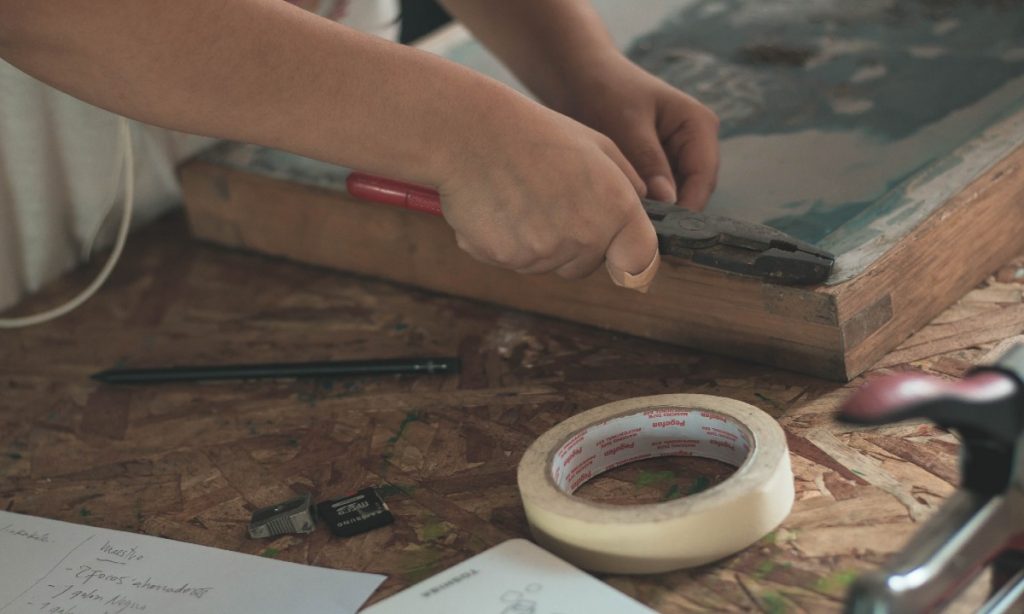What’s the Best Tape To Use When Painting?

No matter how experienced or skilled a painter you are, it’s nearly impossible to accurately paint in a straight line with no smears or misalignment errors. That’s where marking tape comes into play!
WHAT IS PAINTING TAPE USED FOR?
The idea is to tape up the spots where you don’t want any paint to get, like baseboards, trims, or borders, and stroke the brush freely without worrying about perfectly straight lines. Even when you’re using a roller on walls, the tape can prevent paint splatters and bleed from ruining hours’ worth of your hard work.
It’s also commonly used for design! Just tape up the wall in all sorts of angles, paint it, and once it’s dry, pull off the tape to get the coolest-looking wall art effortlessly! But, with so many options, sizes, and types in the market, it’s tough to know which one to pick for your project. It mainly depends on the type of objects and walls you’re painting, and we’ve covered it all in this in-depth guide.
ARE MASKING TAPE AND PAINTING TAPE THE SAME?
Well, all painting tape belongs to the masking tape category, but not all masking tapes are good enough for a painter’s requirements. Masking tape for painting is very high quality, and despite having the same crepe-paper backing as all masking tape, it has a highly durable backing which makes it fit for your painting needs. Essentially, it results in the prevention of tearing, residue build-up, and wrinkling, which are all a painter’s worst enemies.
BEST MASKING TAPES FOR DIFFERENT TYPES OF WALLS
When it comes to masking tapes, there’s no universal type that’s ideal for all sorts of painting needs. The right choice depends on the type of project you’re working on, and the material and finish of your “canvas” — so here’s a quick rundown of some of the most common scenarios!
BEST MASKING TAPE FOR PAINTING BRICK OR CONCRETE
For concrete or bricks, your average blue tape is normally not strong enough. It lacks the adhesion to reliably stick onto brick or concrete and stay there. You’re better off with a tape that’s designed for “hard-to-stick” surfaces, which you’ll often find written on the packaging. These are strong enough to stick to a garage floor and old chimney bricks as you paint your lines accurately. You can also cover door frames with it to prevent splatters from destroying your tidy work!
BEST MASKING TAPE FOR STRIPES AND CRISP LINES
The average blue tape sticks well enough to section off areas long enough to let you add sharp lines and stripes to your wall. They’re low-cost, offer crisp accuracy, and get the job done. This ScotchBlue Painter’s Tape is a great example!
BEST MASKING TAPE FOR PAINTING TEXTURED SURFACES AND WALLS
When it comes to textured surfaces, sharpness and accuracy depend more on your skill than the type of tape you use. Since textured walls offer fewer contact points for the tape to stick to, make sure that the surface is clean enough to give the tape the best shot at adhesion.
Your best bet is to get a tape that’s specially designed for textured surfaces, like this Rough Surface Painter’s Tape from Scotch.
BOTTOM LINE
You can find many different types of masking tape for painting, but the ideal pick always has to do with the type, material, and finish of the wall you’re working on. So, check out the recommendations above to get the most precise lines on your next project!
